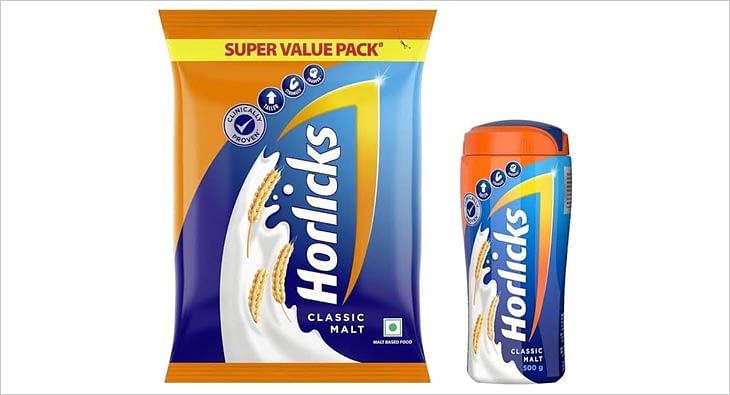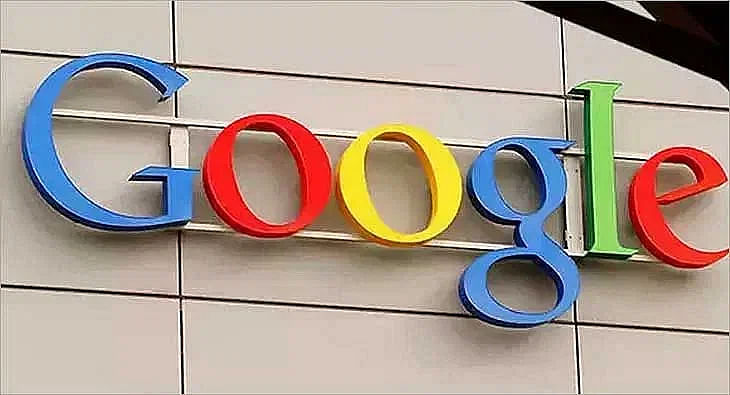Guest Column: 5 practices for successful TV plus Digital convergence campaigns: Alap Ghosh SilverPush
Remembering how to do TV+Digital convergence campaigns right, media planners and advertiser have the ability to make the transition easier, both for themselves and for their audiences, while maintaining harmony in the advertising ecosystem writes Alap Ghosh, Consulting CSO, SilverPush

Remembering how to do TV+Digital convergence campaigns right, media planners and advertiser have the ability to make the transition easier, both for themselves and for their audiences, while maintaining harmony in the advertising ecosystem writes Alap Ghosh, Consulting CSO, SilverPush
Despite the domination of television on the media budgets of Indian advertisers, the meteoric rise of digital media and digital devices has caused an interesting change in the way people watch television. According to analytics giant Millward Brown, 61% of Indians own a screen in addition to their TV. This could be a laptop, a tablet or a smartphone. As a natural progression, people tend to multitask, use another screen while watching TV. Two distinct behaviors then emerge. Users will either mesh devices (tweet about what they are watching on TV, or search for character bios while watching a program) or users will stack devices (check their email, read the news, post on their Facebook feed, nothing related to what they are watching).
Now, while this behavior is welcome for digital media owners and buyers, it also signifies a shift in attention from TV, an important factor for broadcasters and TV media buyers. Broadcasters are responding with their own digital offerings in the form of video-on-demand websites and mobile apps. TV media buyers, on the other hand, have found comfort in TV+Digital convergence campaigns.
Convergence campaigns are where digital ads are run in sync with TV ads, solving the problem where audiences are lost during break time. Several convergence offerings have come about from different providers– some obvious, some innovative, some old school, some even controversial. While all of them seem appealing, there are always a few factors that add or remove from the appeal, the effect and the benefit promised.
1. Timing is everything
The promise of TV convergence is that when eyeballs leave the TV during an ad and go to another screen, an advertiser will be present on the other screen as well. Which makes it vital to understand when will the viewer’s attention shift. The “moment” in moment marketing comes from capturing the exact time when target audiences are ready and open to engage with advertisements. In TV convergence, that moment is during a break, a low traction advertisement, in the middle of less engaging content or at a critical moment of the program’s script [a character dying, a fight breaking out on a reality show, a goal being scored in a football match]. Being present then, at that very moment, is absolutely important. Media buyers must make sure that campaigns start when the moment occurs and stop as soon as the effect of the moment is over, so exposures are never wasted, always used efficiently.
2. How your TV viewer is behaving on digital
TV convergence pitches often imply that when a viewer is looking at their devices while watching TV, they’re watching “TV-like” content. In reality, viewers could be playing a game, reading an article, post on Facebook or Instagram, tweet about what’s coming on TV. Sticking to video ads during TV convergence campaigns takes away the entire audience that is possibly doing something totally different. TV planners must engage their digital agencies for creative assets beyond the TVC to take advantage of every format available.
3. Reach at the moment, reach everywhere
TV convergence should help advertisers reach their audience no matter what screen the audience is on. Advertisers need to be present wherever the user is likely to be - Facebook, Twitter, YouTube, Instagram, news sites, gaming apps, instant messengers and many more. Planners must select an all-platform, multi-device, multi-format TV convergence solution to maximize their reach. To exclude a platform is to ignore valuable reach.
4. Must track, must measure
While TV convergence is about reach across devices, it is important to know it is still digital and should give advertisers all the benefits of a digital campaign, including tracking and attribution. Measure the impact on engagement, both on the convergence campaign and the trailing effect on regular digital campaigns, on social traffic, on search queries and on lower funnel KPIs. However, TV convergence is not a performance medium. Just like modern advertisers would rarely use TV to boost your daily sales, TV convergence should help reclaim audiences lost to other screens and help reach audiences, even when no TV ads are running.
5. Me, my friends and my rivals
TV convergence is a party for everyone. At its base, TV convergence campaigns should work during breaks and on an advertiser’s own ads. To increase reach and appeal to newer audiences in a different context, advertisers should find complementing brands and target their ads. A pharmaceutical brand should talk to the same audience that a health insurance brand talks to. A noodle brand should talk to the audiences of fast food brands. It makes sense to look for the new audiences on the ads of allies. And finally, it should target ads of competitors.
When an advertiser’s competition is talking to audiences on TV, it is logical and imperative that they be present as well. However, guerilla advertising is a double-edged sword. Competitors could also target an advertiser’s airtime. And because of this, it is also frowned upon. The formula for this, then, is simple. The convergence platform should respect advertisers airtime and offer the first right to advertise on their own airtime. These usually become an open budget, always on convergence campaigns. If an advertiser does not have the budgets to buy all exposures belonging to them, then an ally should be given second preference. Only if neither the advertiser nor an ally is advertising at that moment, should the opportunity go to a competitor.
With the increasing availability of affordable laptops, tablets and smartphones and high speed, cheap data at home, offices and on the move, the shift of audience attention from TV to another screen is imminent. With that shift will come the movement of budgets, from TV to digital media. Remembering how to do TV+Digital convergence campaigns right, media planners and advertiser have the ability to make the transition easier, both for themselves and for their audiences, while maintaining harmony in the advertising ecosystem.
Read more news about Marketing News, Advertising News, PR and Corporate Communication News, Digital News, People Movement News
For more updates, be socially connected with us onInstagram, LinkedIn, Twitter, Facebook Youtube, Whatsapp & Google News
About 60% Instagram influencers in India have fake followers: Report
As per a media report, influencer marketing platform KlugKlug has found that only 2.48 million profiles out of the 8 million have ‘high-quality’ followers
Two of three Instagram influencers in India have more than 60 per cent fake followers, a report by influencer marketing platform KlugKlug shows.
This is particularly true for the beauty and fashion sector, the report noted.
Other countries that have influencers with fake followers are Brazil, the UAE and Indonesia.
As per media reports, such Instagram fake followers can be roped in for as little as Rs 10 to a high of Rs 1,000.
According to Klug Klug India, only 2.48 million profiles out of the 8 million have high-quality followers.
A number of other categories have also been buying fake followers, media reports have noted.
As per a media expert, quoted in the reports, brands are finding it difficult to identify and curb the menace of fake followers and bots.
In a recent setback for influencers the Central Consumer Protection Authority (CCPA) has said those promoting activities like gambling and betting are equally liable as the companies promoting the same.
15% consumers enhance their user experience through virtual assistants: Kantar report
According to Soumya Mohanty, Managing Director & Chief Client Officer- South Asia, Insights Division, Kantar, less than 1% of ads get tested due to lack of time
Marketing data and analytics firm Kantar has unveiled a report that studies the burgeoning AI market to dish out actionable insights for marketers. Within AI, virtual assistants are the fastest growing segment. The report noted that 15% consumers enhanced their ‘user experience through virtual assistants’. This segment is the fastest growing at 27% YoY.
According to the study, while ‘fitness’ and ‘social media’ apps are amongst the leading categories, driving AI adoption (with an average of 2.3 AI led features embedded in these applications), segments like ‘BFSI’, ‘job search’ and ‘short video’ apps are relatively slow in AI adoption, with an average of 1.2 features each. Entertainment apps, digital commerce and pharmacy apps stand somewhere in the middle with 2.0 & 1.8 AI features being adopted, respectively.
Additionally, the report said that while 90% of marketing and sales leaders think their organisations should be using AI “often”, 60% said their organisations “rarely or never” do. Speaking to exchange4media, Soumya Mohanty, Managing Director & Chief Client Officer- South Asia, Insights Division, Kantar highlighted that currently there are a lot of organisations who know that there is something called AI, but haven’t yet figured out how it could help them holistically.
“A lot of the AI just gets used for efficiency purposes, so repetitive tasks get automated,” Mohanty pointed out. Data also plays a big role in why certain organisations are struggling with how to use AI.
For instance, Mohanty explained that in segments like D2C, telecom etc. there is a lot of primary or first-party data. So being able to leverage AI also gets easier. “It's the traditional large sort of FMCG type companies where data sits in silos. You don't really have one single source of data where it's a little difficult to use the full power of AI, because the full power of AI also needs a lot of data sitting in a structure that you can use,” she added.
So, can AI help marketers have a unified view of data? No, says Mohanty. “AI does not help marketers get a unified view of data. Once you have data in a unified way, AI can help you do a lot more with that data.”
According to her, organisations today need to have good, strong data warehousing. “It needs to make sense because a lot of the silos are also because everybody owns one part of it. A lot of people have their own analytics teams internally, so there are a lot of agendas and stakeholders. And then we say data is in silos because fundamentally, when you're doing something internally, different people have different stakes in it,” Mohanty added.
Puneet Avasthi, Senior Executive Director, South Asia, Insights Division, Kantar shared that most organisations are now heavily investing in creating first-party data sets. “Companies that have first party data about their consumers and transactions or interactions that they have with the brand are going to be able to leverage that more effectively to create sharper profiles for the brand as such for the consumer and build relevant recommendations at the right moments.
Panning out she also highlighted how AI can be leveraged to enhance market research and make it more accessible, a part of which Kantar is itself involved in. “A lot of times people say that we can't test an ad because we don't have time. So less than 1% of advertising gets tested and just gets put out. Does it work when it gets put out? It is the question the audience should answer, because so many times, it backfires,” Mohanty shared. Apparently, digital particularly doesn't get tested because organisations just do a/b testing and leave it at that.
Speaking of preferred use cases of AI, Avasthi added that various businesses and brands are looking at creating an experience for the brand that is in line with the brand's architecture and progress across all touch points. “That is something that the AI engines that are working behind can ensure, that all such interactions are consistently delivered across different virtual assistants or chatbots that are available to the consumer,” he said.
The other use case, according to Avasthi, is ensuring that there is greater visibility for the brand in the digital sphere as such, through various recommendation engines, when a certain need is being looked for and to throw up the right kind of information about the brand so that the brand message is amplified in the mind of the consumers.
Among other insights from the Kantar AI report is that 88% consumers used AI based algorithms which analysed their preferences, behaviours, and interests to create personalised recommendations for tailored experiences. This segment grew at 6 % YoY. At 21%, ‘smart home automation’ is a smaller segment but growing at 25% YoY.












 Share
Share
